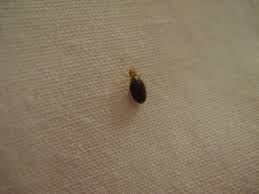
Why Are Bed Bugs Such a Big Problem?
Bed bugs are a gross pest that no one wants in their home. Research indicates that in the 1940s and 1950s in America, nearly 30% of homes experienced a bed bug infestation every year. Since the invention and common usage of many pesticides like DDT, the prevalence of outbreaks have dropped significantly. Even if this decrease is severe, the consequences of an infestation remain suboptimal. Today let’s explore why bed bugs are such a big problem.
Bug Bug Biology
The name “bed bug” typically refers to one of two species in the genus Cimex. These insects are ‘ectoparasites’. This term is derived from two Greek words. The first is ‘ecto’, meaning outside or external. The second, ‘parasite’, refers to an organism that gains nutrients from a host at the host’s expense. This is precisely how bed bugs survive. They feed primarily on the blood of humans while they sleep.
Both species of bed bugs, Cimex lectularius and Cimex hemipterus, are similar in appearance. They measure about a quarter of an inch long, about ⅓ the diameter of a penny. They typically are reddish-brown, have a flat body, and possess non-functional wings (thankfully). A bed bug can live up to roughly 16 weeks.

Cimex Lifestyle
Contrary to popular belief, bed bugs spent very little of their time actually attached to their hosts. They are typically active at night when they will feed on humans. Bed bugs prefer open and exposed skin, so they will commonly bite the face, arms, and upper torso. These bites usually will not turn red, but they will swell. Bed bugs rarely bite the armpits and behind the knees, making this a good diagnostic distinction between them and other types of pests.
Sometimes, bed bugs are solitary creatures. Usually, though, they congregate in groups called harborages These can be found anywhere that is dark and damp in a home. Most commonly harborages reside in cracks in walls and furniture, behind wallpaper, and under carpeting. The reason they don’t spend much time on humans is simple: they don’t have the body for it. They lack appendages that would allow them to cling to clothes like mites or fleas.
Signs of Infestation
You wake up one day and notice some itchy bites on your neck. Are they from bed bugs? While contacting an exterminator will likely give you the fastest and most accurate answers, here are a few things to look for when investigating.
- Itchy spots or bites that are roughly in line with each other
- Foul odors emanating from corners of carpet, wood, or furniture
- Reddish/brown spots on mattresses and sheets
- Leftover fecal matter in tight spaces
- Recent travel to hostels, hotels, or other areas of high traffic
Prevention
Unfortunately, there is not a lot to be done in the way of preventing bed bug infestations. Bed bugs don’t really care about the cleanliness of their environment. This means maintaining a very clean home won’t deter them. They just require somewhere warm that has a food resource nearby.
That being said, there are preemptive and preventative steps you can take, especially when returning from traveling. One of the easiest ways to introduce bed bugs into your home is to bring them back from vacation, a trip, or any other reason that you’re sleeping away from home. While the bugs can’t hitch a ride on your clothes directly, they can crawl into your luggage, backpack, or suitcase.
Experts recommend removing and washing the contents of suitcases immediately after returning from home. Leaving suitcases out in the sun for an afternoon can effectively kill bed bugs as well. If you are returning into a cold climate, leaving suitcases or luggage in a cold, dry location like a garage can effectively kill pests and eggs.
Removal
After a home experiences an infestation, it’s possible, although sometimes difficult, to remove the bed bugs. Calling a pest control expert can be an expensive but necessary step down the road. Before making a call, some of these steps can be taken first to alleviate the problem.
- Remove clutter from the infected room. Clothes on the floor, stuffed animals, and general clutter provide hiding places for the bugs. Make sure to remove these items without spreading them to other rooms!
- Launder all possibly infected garments. Sheets, blankets, pillowcases, etc. are all places that bugs could live. Make sure to wash these thoroughly.
- Take apart dressers and bed frames. For particularly bad infestations, this step may be necessary. Bugs can hide in cracks in the wood and metal, so taking apart and cleaning these is a good step.
- Call a professional. If none of these steps work, it may be time to call a professional.
Have you found a particularly effective way to get rid of bed bugs? Let us know in the comments!
Check us out on EarthSnap, a free app brought to you by Eric Ralls and Earth.com.
News coming your way













